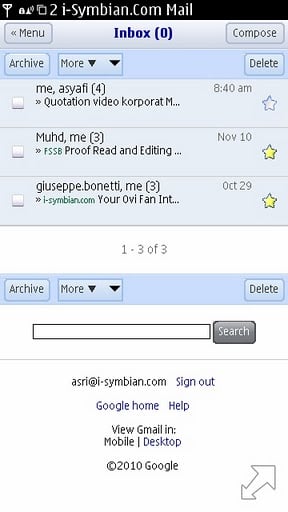
In a perfect world there would be no need to code the same application to run on multiple platforms. Developers could spend their time and energy towards building new features, or make the features their application already have easier to discover. Sadly, that’s never going to happen. It was supposed to with HTML5, but it’s a bit too early to declare that either a failure or success. What’s obvious is that Apple showed the mobile industry how important it was to have a high speed and fully functional web browser on your mobile phone. Google, with Android, went one step further and not only built a browser that was faster, but also includes support for Adobe’s Flash. Sure, it may make the phone a little bit slower, and yes, it may consume a little bit more battery, but you get the entire desktop web on your mobile device.
The funny thing about mobile browsers is that the first company to take them seriously, Nokia, is now laughingly behind the rest of the market. When Nokia announced that they would include a WebKit based browser on each and every Symbian device, way back before the even the iPhone came out, it was a revolutionary moment. Since then it seems that everyone now has a better WebKit based browser on their device than Nokia, even RIM with their new BlackBerry 6 operating system.
History lesson aside, one of the best mobile websites ever to grace a touch screen is Google’s GMail service for the Apple iPhone. I use it everyday, multiple times a day since it’s better than the iPhone’s built in email client, and Symbian owners now get to experience the same awesome user interface courtesy of Asri al-Baker who packaged the shortcut to http://mail.google.com/mail/x/gdlakb-/gp/ as a web application that you can stick on your home screen.
Grab it from here and start enjoying GMail the way it was meant to be used on a mobile phone.
[Via: All About Symbian]
